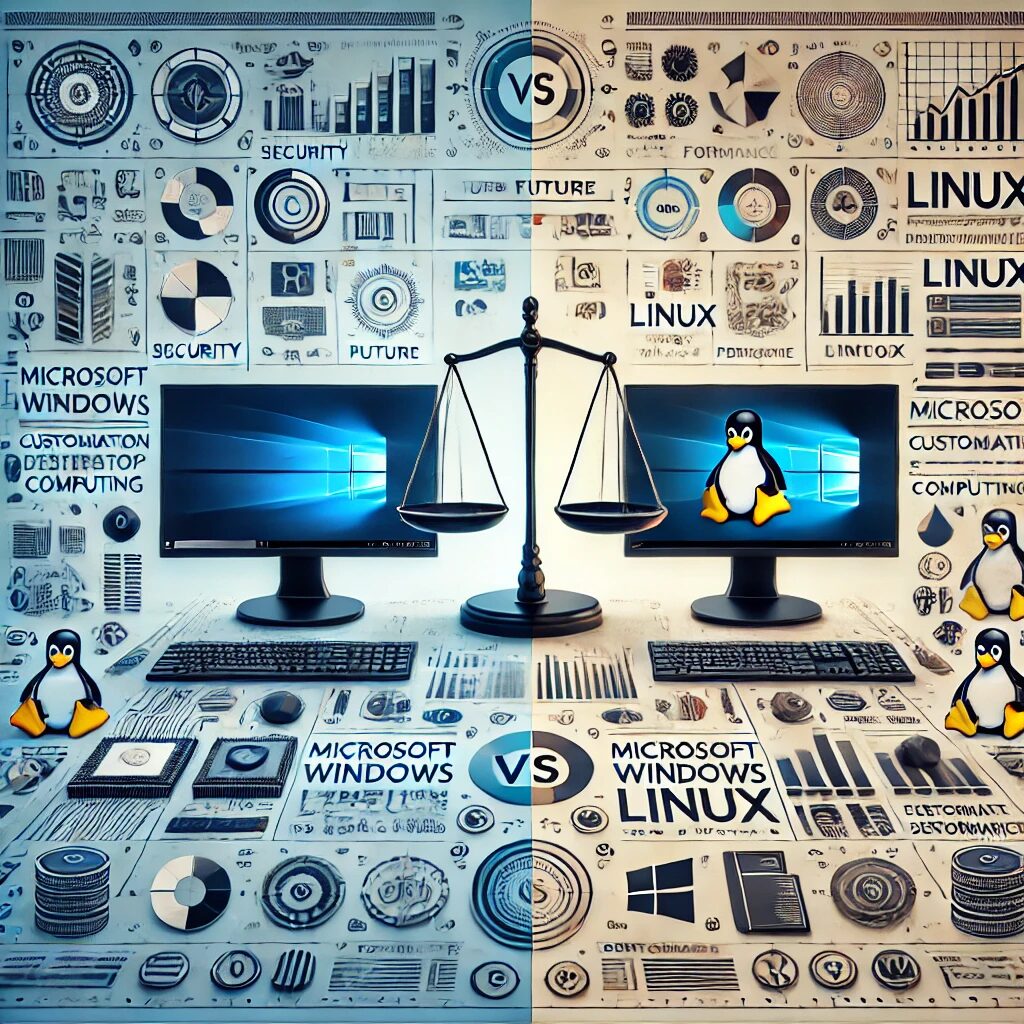In the realm of desktop computing, two operating systems have consistently stood out: Microsoft Windows and Linux. Each has its own strengths and weaknesses, catering to different types of users and use cases. This article delves into the comparison between these two giants and explores what the future might hold for desktop computing.
Microsoft Windows
Microsoft Windows is the most widely used desktop operating system in the world. It offers a user-friendly interface, a vast library of software applications, and strong compatibility with a wide range of hardware. Windows has been the go-to choice for both personal and professional use for decades.
Advantages:
- User-Friendly Interface: Windows is known for its intuitive and easy-to-navigate graphical user interface (GUI).
- Software Compatibility: Most commercial software is developed primarily for Windows.
- Gaming: Windows is the preferred platform for gaming due to extensive support for a wide range of games and gaming hardware.
- Enterprise Integration: Strong integration with Microsoft Office, Active Directory, and other enterprise tools.
Disadvantages:
- Cost: Windows licenses can be expensive, especially for enterprise editions.
- Security Vulnerabilities: Being the most popular OS makes Windows a prime target for malware and viruses.
- Resource Intensive: Windows tends to consume more system resources compared to some other operating systems.
Linux
Linux is an open-source operating system that is popular among developers, system administrators, and tech enthusiasts. It offers a high degree of customization, security, and stability. There are many distributions (distros) of Linux, such as Ubuntu, Fedora, and Debian, each tailored to different needs.
Advantages:
- Open Source: Linux is free to use and modify, with a strong community supporting its development.
- Security: Linux is known for its robust security features and lower susceptibility to malware.
- Performance: Linux can be more efficient and less resource-intensive, making it suitable for older hardware.
- Customization: Users have full control over the system, allowing for extensive customization.
Disadvantages:
- Learning Curve: Linux can be challenging for users unfamiliar with command-line interfaces.
- Software Compatibility: Some popular software and games are not natively supported on Linux.
- Hardware Compatibility: Some hardware manufacturers do not provide Linux drivers, which can limit functionality.
The Future of Desktop Computing
As technology evolves, so does the landscape of desktop computing. Here are some trends and predictions for the future:
1. Increased Adoption of Cloud Computing: With the rise of cloud-based applications and virtual desktops, users may rely less on local operating systems and more on cloud services.
2. Hybrid Operating Systems: Future operating systems might blend the strengths of Windows and Linux, offering user-friendliness, security, and performance in one package.
3. Enhanced Security Measures: As cyber threats become more sophisticated, future OS developments will likely focus heavily on security enhancements.
4. Greater Customization and Personalization: Users will demand more control over their computing environments, driving the development of highly customizable operating systems.
5. Open Source Growth: The open-source movement is likely to continue growing, with more users and organizations adopting Linux and contributing to its development.
Conclusion
Both Microsoft Windows and Linux have their own unique advantages and cater to different user needs. While Windows remains dominant in the consumer and enterprise markets, Linux is gaining traction, particularly among developers and tech-savvy users. The future of desktop computing will likely see a convergence of the best features of both operating systems, alongside new innovations driven by cloud computing, enhanced security, and user customization.


